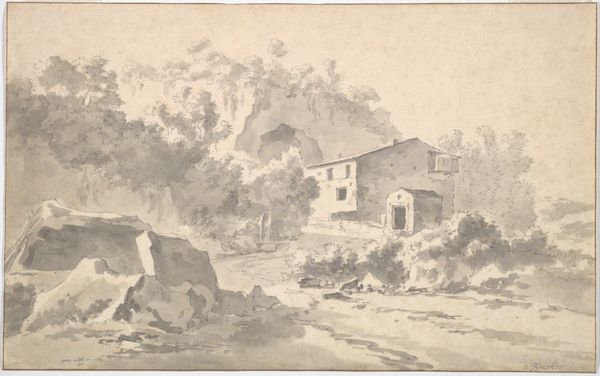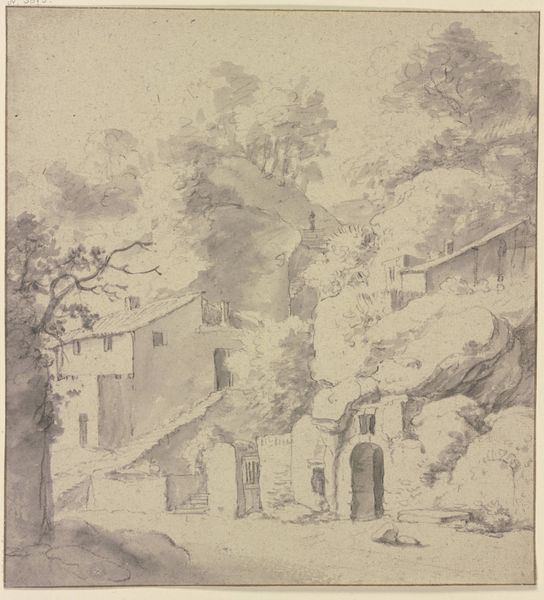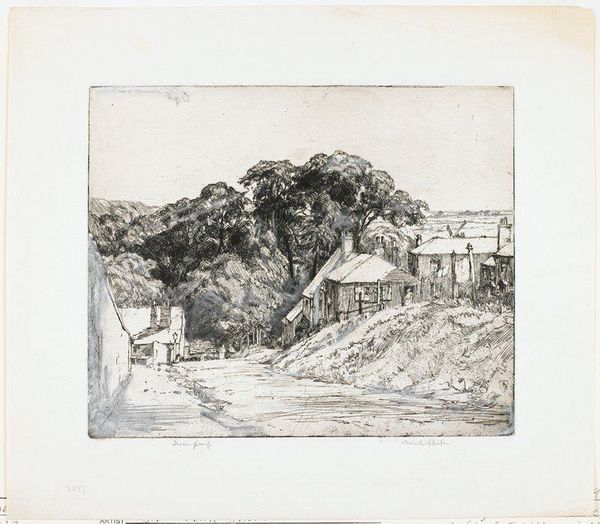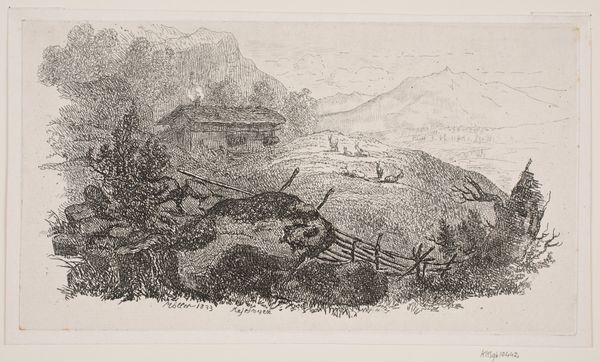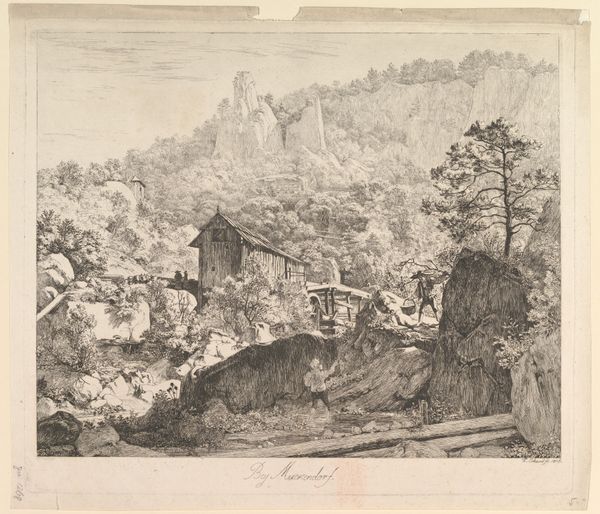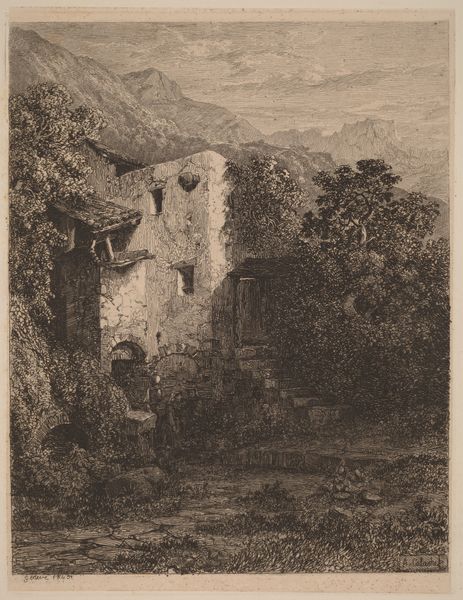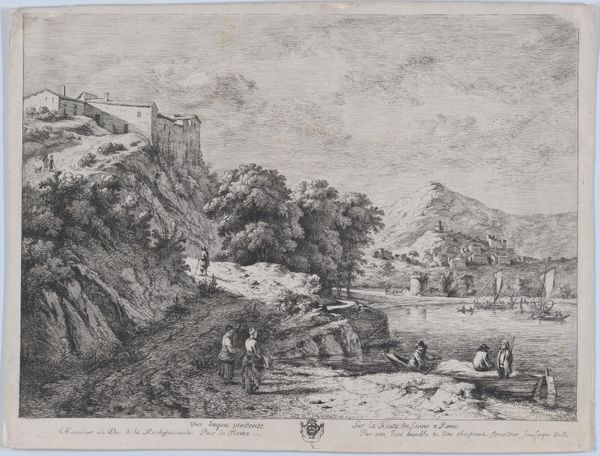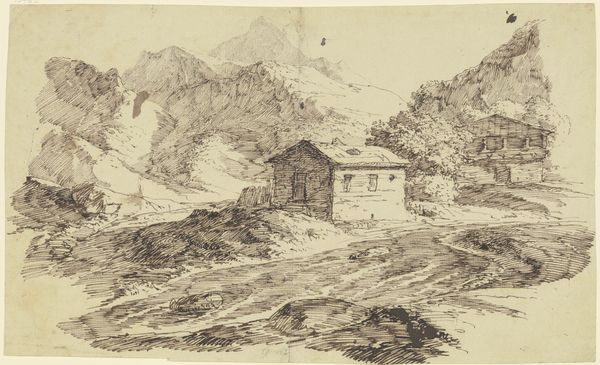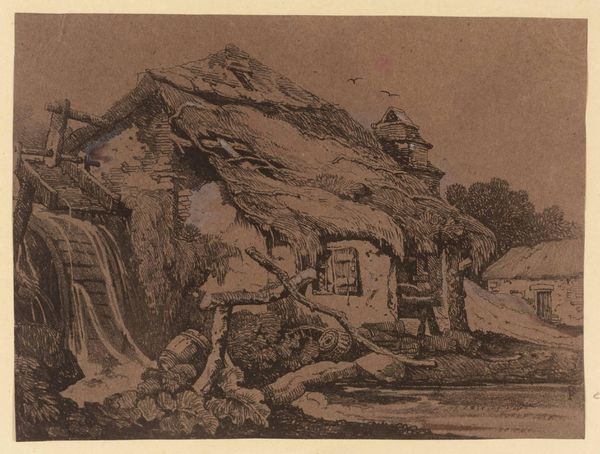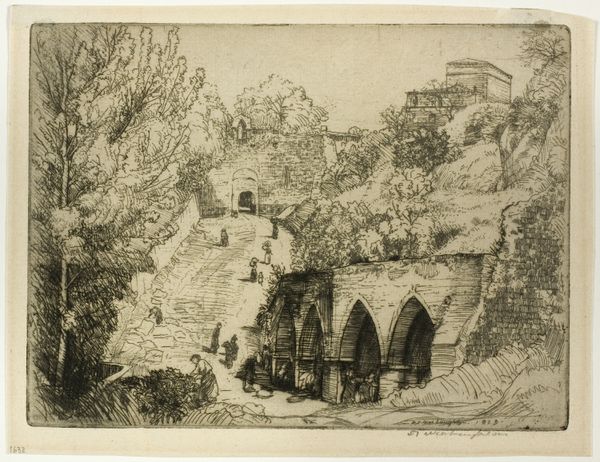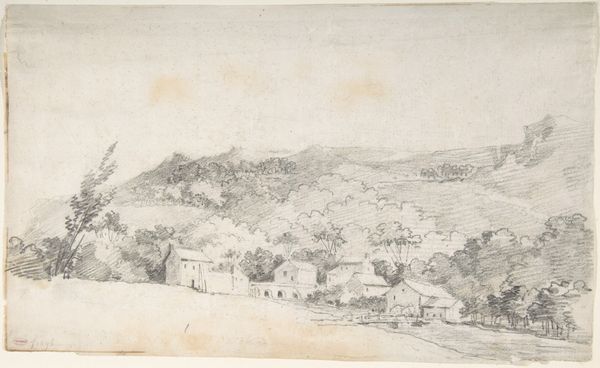
drawing, print, paper, pencil, graphite
#
drawing
# print
#
pencil sketch
#
landscape
#
charcoal drawing
#
paper
#
pencil drawing
#
pencil
#
graphite
#
realism
Dimensions: 239 × 192 mm
Copyright: Public Domain
Curator: This is an interesting piece titled "Crags and Horses in Highlands," date unknown, housed here at the Art Institute of Chicago. It appears to be a graphite drawing. Editor: It's striking. A somber, almost oppressive mood created by the stark, mountainous landscape. It looks like a document of place. Curator: Indeed. The artist, Henry Hill, uses the graphite to achieve a high degree of realism. I'm drawn to the artist's material exploration of line, tone, and form. It clearly represents, quite accurately, what seems like, perhaps, an abandoned structure built against the base of a massive cliff. Editor: Yes, and that begs the question of why document this scene at all? Was Hill responding to larger historical narratives about the Highlands? Perhaps he sought to romanticize it? The composition certainly suggests an engagement with the sublime. The relatively large structures dwarfed by nature. It's easy to picture it as a comment about human endeavor being humbled. Curator: From a material perspective, what stands out is the artist's mastery of rendering texture. Note the way he varies the pencil strokes to convey the ruggedness of the crags, versus the smoothness of the stonework. And what kind of paper did he use to achieve the texture in this kind of details? Considering also that drawings like this could become the basis for future engravings and prints that circulated far beyond the original. It could be used in didactic displays of science or travel books. Editor: It’s tempting to imagine the socio-political implications as well. I mean, the work would have circulated within a culture deeply embedded in colonial dynamics. One begins to ask, how would the images of highlands have served as social political statement. Curator: A relevant question, to be sure. Though I’m equally fascinated by the labor that went into this drawing, which itself is evidence of production...a skilled artist, the graphite, and paper as commodities available during this time period. These material connections reveal something that cannot be fully revealed. Editor: That’s a perspective that does open things up. Well, regardless, I find the image to be somewhat eerie, quite intriguing when it’s situated within a historical framework. Curator: For me, too. And seeing the object in the room offers access to so many questions relating to the artist’s intentions.
Comments
No comments
Be the first to comment and join the conversation on the ultimate creative platform.
